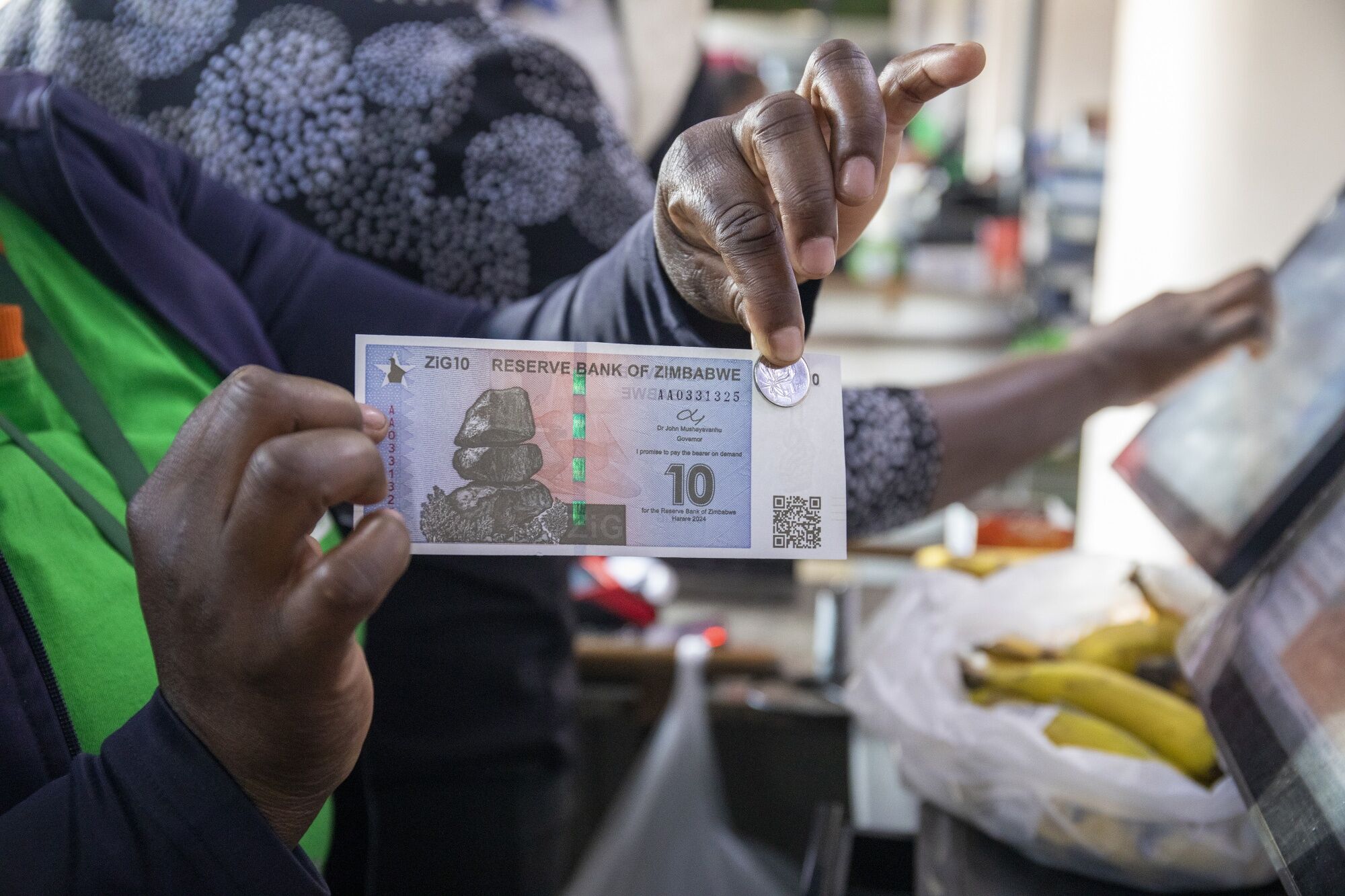Zimbabwe
Currency Collapses

A supermarket till operator displays a 10 ZiG banknote and 5 Zig coin in Harare
© Cynthia R Matonhodze/BloombergOn 5 April, the Reserve Bank of Zimbabwe (RBZ) introduced a new and structured currency backed by gold and foreign currency reserves named the Zimbabwe Gold (ZiG). The ZiG is backed by 2,522 kgs of gold in reserves and US$100 million in foreign currency reserves. While use of the gold standard as a primary monetary system is nearing obsolence, the Zimbabwe government has adopted this system as a strategy for de-dollarising the economy and as a way for addressing the country’s currency and exchange rate woes that saw the ZiG’s predecessor, the Zimbabwean dollar, losing about 114% of its value between January and March 2024. The decision to return to the gold standard, experts argue, is more of a political gesture than a long-term solution, citing fundamental challenges such as unsustainable debt levels, bad governance, lack of the rule of law, policy inconsistency and human rights violations.
The introduction of the ZiG represents the third occasion in a decade where a new currency is launched by the country’s monetary authorities. In 2014, Bond Notes and Coins were introduced as an export incentive until they were phased out in 2019 with the subsequent return of the Zimbabwean dollar which was abandoned during the 2008 hyperinflationary era. Whilst ZiG was launched on 5 April 2024, its circulation only began on 30 April, inadvertently reinforcing the use of US dollar in the interim and beyond.
The collapse of the Zimbabwean dollar is mainly attributed to economic mismanagement through excessive money printing as a tool in financing the RBZ’s quasi-fiscal activities. While the RBZ has indicated that this practice will cease, though unlikely, experts warn that lasting stability will require comprehensive currency and foreign exchange management reforms to restore confidence in the local currency. The continuation of quasi-fiscal activities will imply that neither a gold-backed nor a facility-backed currency will help solve the country’s currency woes. The country’s efforts towards de-dollarisation will likely face the same fate as in Argentina and Venezuela, where this was unsuccessful. Zimbabwe’s multi-currency regime is likely to continue beyond the 2030 legislated cap.
Whilst ZiG has been flouted as the new legal tender in the country, it is not completely new. It was introduced as a central bank digital currency on October 5, 2023 and has since changed the name to Gold-Backed Digital Token (GBDT). The decision to make it the primary legal tender is not based on its market appeal and potential. It is likely to suffer the same fate as its predecessor currencies. The government’s sincerity in building the currency’s confidence is doubtful as Zimbabwe’s Central Government still insists on households and firms to pay for taxes and gas in foreign currency despite introducing a new currency. Such a scenario, coupled with central bank mistrust and lack of confidence in the monetary system are hurdles that need to be overcome if the new currency is to bring about price and exchange rate stability in both the short and long term.
The economy and its currency challenges are a constant dilemma for the government. The introduction of the ZiG represents another attempt by Zimbabwe’s monetary authorities to tackle these persistent problems. Changing currency alone, though, without addressing the fundamental micro and macro-economic challenges is not enough. The success of ZiG will depend on the implementation of comprehensive reforms to restore confidence in the local currency and address the country's underlying economic challenges.
Christopher Takunda Mugaga is the CEO of the Zimbabwe National Chamber of Commerce (ZNCC)